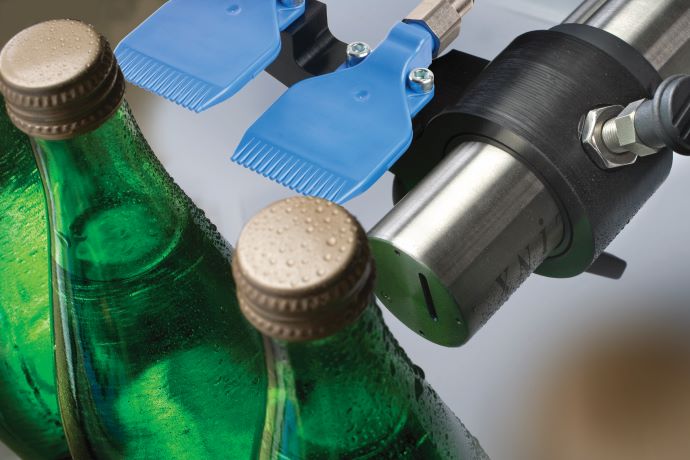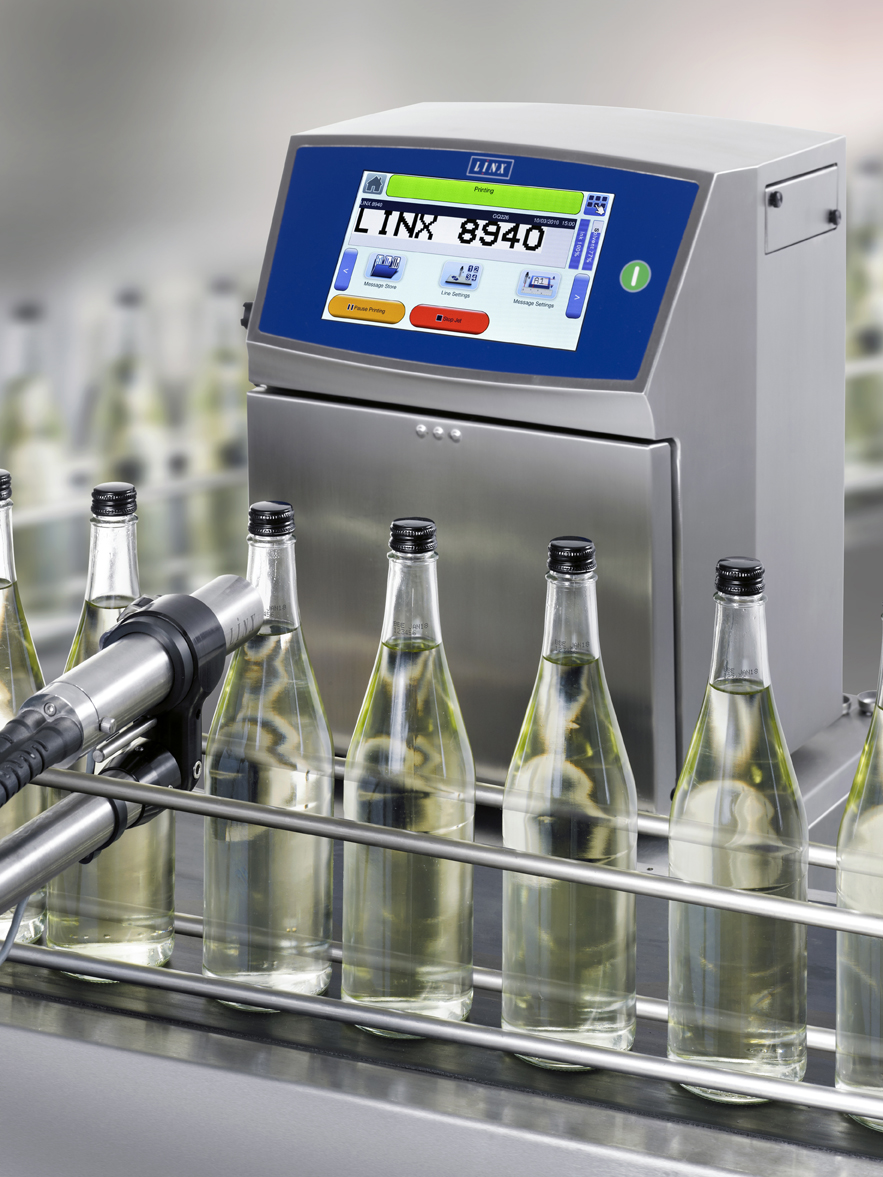CODING AND MARKING SOLUTIONS FOR BEVERAGES
Introduction
The beverage market is a huge global business. In 2017, UK soft drinks alone reached a value of around 16.9 billion eurosi, while global dairy-based beverages are projected to record a CAGR of 5.5% in the period between 2018 and 2023ii. Alcoholic drinks are also enjoying a change in fortune, with the sector’s 1% growth in 2017 representing a reversal of the declines of previous yearsiii.
As ever, the drinks sector continues to play host to a stream of new trends. Technological advances of recent years have seen the advent of QR codes and thermochromic inks for interactive cans and bottlesiv, for example, while innovative new marketing techniques such as Coca-Cola’s popular ‘Share a Coke’ campaignv frequently shape the industry. But perhaps the most striking trend of the moment is the one towards ‘natural’ values.
Widespread lifestyle changes are seeing consumers demand less sugar and artificial ingredients in their drinks, driving ongoing boosts for bottled watervi, wellness teasvii, and fermented drinks such as kefirviii, among others. At the same time, this emphasis on the earthy and authentic is behind strong calls to reduce plastic waste, causing small retailers to report sales drops in plastic-packaged goodsix.
This in turn has an impact on packaging – and therefore on coding and marking. While PET bottles are likely to maintain a strong position due to their resealability and light weight, many brands are now looking at non-plastic alternatives. Lucozade has recently trialed edible podsx, while A2 Milk has switched from plastic to paper-based cartonsxi. Such shifts expand the range of shapes and substrates that need to be coded onto.
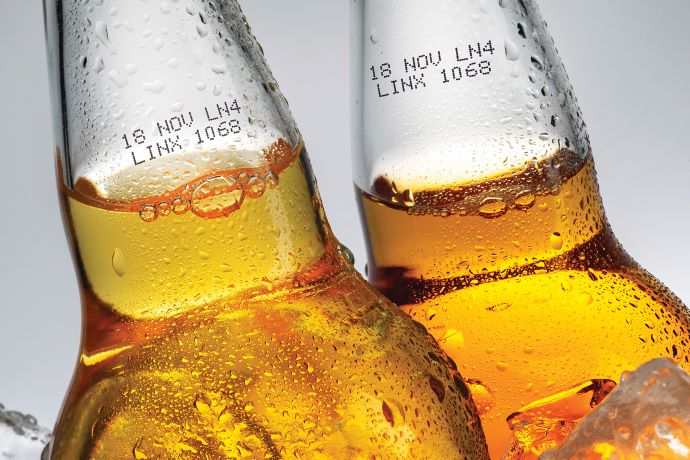
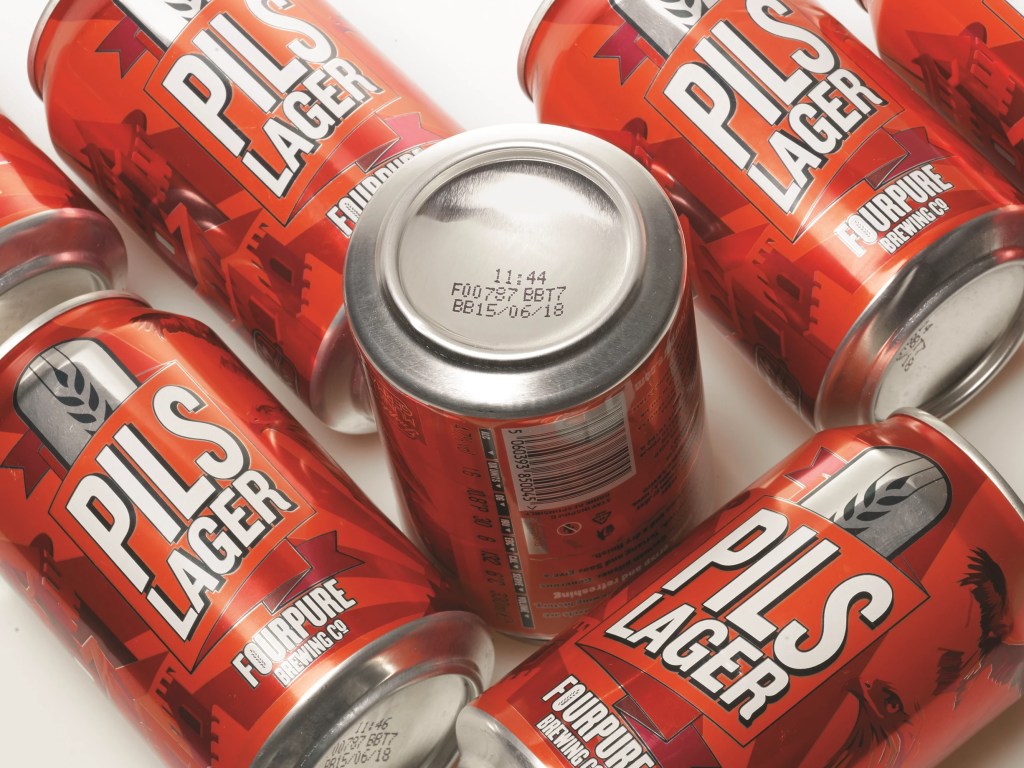
Sustainability is a major concern for consumers. Our own research has found that 89% of consumers are worried about the impact that soft drink packaging has on the environmentxii.
In addition to improved recycling infrastructure, a solution supported by 91% of respondentsxiii is the adoption of reusable glass bottles. This would mean far fewer bottles were manufactured, saving significant amounts of energy and resources. And it can be supported by special coding inks that are removable through a washing process.
Another current trend is towards the premium and experiential, with consumers focusing on quality-of-experience rather than quantity. This is apparent in the popularity of limited-edition flavorsxiv and demand for ‘authentic’ ingredients – and can be seen most clearly in the way millennials’ reduced alcohol consumption is powering a trend for premiumisation, with small-batch, artisan-style spirits on the risexv. As premium products demand premium packaging, the challenge is then to ensure that printed best-before dates or barcodes do not detract from the aesthetic appeal of the pack.
This, however, must not compromise the basic requirement of coding and marking to convey information clearly and durably. The cost of recalls – both in monetary and reputational terms – can be huge and has recently been felt by several major drinks brandsxvi xvii. As such, one of the most essential coding requirements for many beverage companies is consistently clear and easy-to-read codes at high-speeds, often in environments where condensation can be an issue.
Quality coding also provides protection against another blight of the drinks sector: counterfeiting. Especially prevalent in high-end alcohol, counterfeiting impacts soft drinks too, as seen recently when a factory in Delhi was caught selling sub-standard concoctions under the Pepsi brandxviii. The indelible codes of laser and the special security inks of CIJ both provide options for manufacturers seeking to protect their margins in the fight against increasingly sophisticatedxix counterfeiters.
Quality date and batch coding
Quality coding and marking is essential to enable drinks manufacturers to meet regulations and protect their brand. Only with accurate, durable codes that print clearly even onto wet surfaces can beverage companies trace their products once they have left the factory.
Inks that penetrate condensation to mark both glass and plastic bottles are available with continuous ink jet models. These are particularly well-suited to cold fill applications and those where bottles are stored outside before being brought inside to fill, causing condensation. Such inks also perform equally well where condensation is not present, saving companies with multiple products the need to store different types of inks and have different printers for individual applications.
For coding onto dark materials such as coloured glass or plastic, white, yellow, or blue inks are available to provide contrast and therefore enhanced legibility.
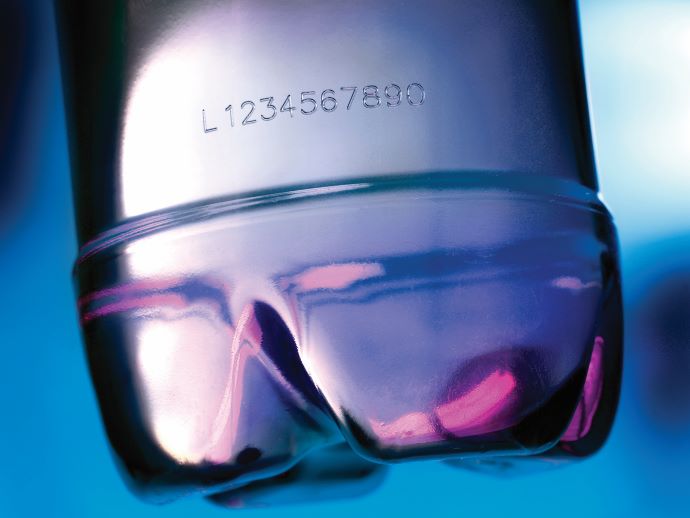
Even an entry-level ink jet coder will give a brand the quality it deserves, allowing smaller businesses to say goodbye to removable labels and roller coders or stamps, and guaranteeing they meet retailer standards and customer expectations. Similarly, for secondary packaging, companies can save on labels, pre-printing and storage costs by using a printer to apply uploaded imagery and logos directly onto card boxes.
Laser technology is often particularly attractive to drinks companies. Laser coders print permanent, quality codes onto a range of substrates, including plastic, glass, coated metal, and labels. Visual appeal is enhanced with laser’s wide range of fonts, enabling codes to match the packaging and branding and thus enhancing the consumer’s impression of the overall pack.
In addition, due to its permanency, laser coding is an excellent defence against counterfeiting. Its additional ability to produce complex logos and circular text on a range of packaging materials makes these traceability codes particularly difficult to replicate.
Reliability
Reliability is a must: in the fast-paced world of the drinks industry, coding equipment has to be able to keep up, especially in harsh environments where sugar dust or water could cause a coder to fail.
Latest coding and marking solutions ensure minimal maintenance by offering self-service features that allow line managers to plan servicing the printer around their production schedules.
Longer servicing intervals – up to two years for some models – and self-cleaning printheads that require a manual clean only once every three months ensure the printer always works reliably. This allows companies to keep their operation running with minimal intervention.
Aside from servicing, some models feature a seasonal shutdown mode, which further saves downtime by ensuring the printer is always ready to print first time, even after extended shutdown, with no need for expensive printer flushing. This supports reliable operation even when the printer is infrequently used, and is especially useful for low-volume, seasonal drinks production of the kind required for special-edition products.
Models are available to deliver reliable operation in wet or damp bottling environments. IP55- or IP56-washdown stainless steel enclosures allow for continual operation even if the printer is washed down with the rest of the production equipment. There is no need to remove or cover during Cleaning-in-Place (CiP), saving further time.
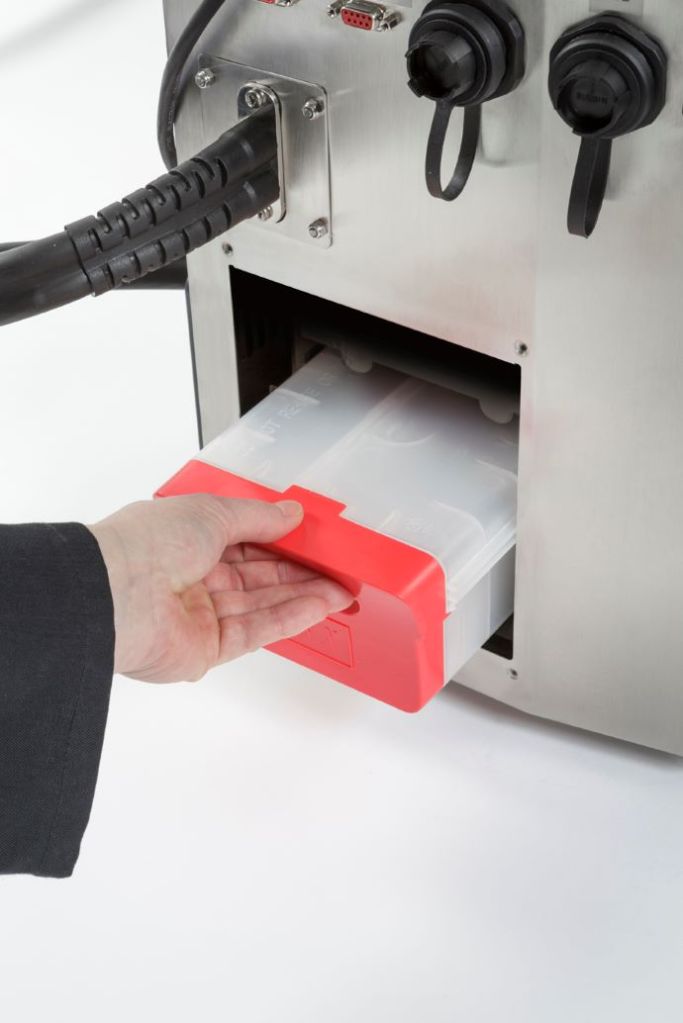
Productivity
Coding and marking solutions can provide an ease-of-use that allows production managers to spend more time focusing on production.
Incorrect codes can mean companies have to recall products, the cost of which is substantial.
Printers with intuitive, smartphone-style interfaces, prompted coding fields and message selection based on images provide fast and easy setup that reduces the risk of errors and saves time during product changeovers. IIoT-enabled systems allow printers to be monitored and operated from any location, offering greater control for managers.
Multi-functional printers – for example, those able to print both primary and secondary codes – mean operators only have to learn one interface and store one ink type. This means production can run more quickly.
Similarly, for added speed and flexibility, a compact and truly portable printer can be placed right next to the line and easily moved to different lines, as and when convenient.
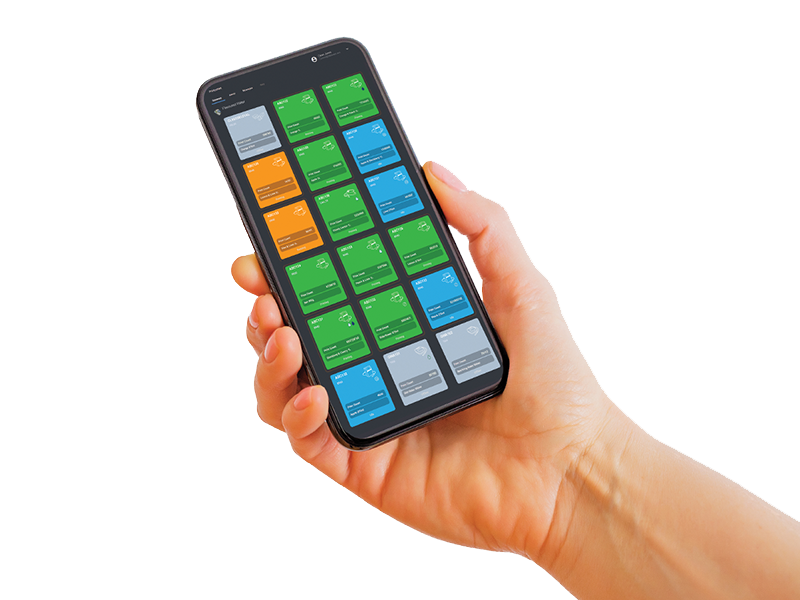
Printer selection- factors to consider
In selecting the most appropriate coding and marking solution for beverage products, there are a number of factors to take into consideration:
- Code content What do you need to code currently and will any changes in requirements – for example, increased code complexity, such as additional lines or printing in different orientations – be supported by the printer you choose?
- Substrate Consider the range of materials and different colours you need to code onto
- Line speed Will the coding solution keep up with your line speeds? Will the print be compromised if it cannot?
- Factory environment If your coding environment is wet or dusty, ensure that your coding solution has the right IP rating to perform reliably
- Available budget Not just the initial purchase price, but the overall cost of ownership should be investigated. This takes into account the initial price and factors such as reliability and the cost of consumables over its lifetime, along with the cost and frequency of servicing. Frequent breakdowns can negate any benefits of a lower purchase price. Leasing and rental options may also be worth exploring
Before you commit to a solution, it is important to have each pack material sample-printed to check how well it works. A trial of the printer on the production line is also worthwhile, ensuring it is exposed to real-life production factors such as speed, dust, or moisture.
The different coding technologies
There is a range of coding technologies available, each with their own particular strengths in different applications. These include laser coders and Continuous Ink Jet (CIJ) printers, which are the most commonly used solutions for primary coding in the beverage industry.
Continuous Inkjet
CIJ maintains an important place in the beverage market, as it can print on almost any substrate including plastic bottles, metal cans, glass or enclosures. A wide range of inks is available to use with CIJ printers, such as:
- Different coloured inks for legibility on coloured materials
- Removable inks for returnable bottles, which saves significant amounts of energy and resources – over and above even the benefits of recycling
- Wet-bottle adherent inks for cold-fill applications
- UV-readable inks for anti-counterfeiting or internal traceability by bottle manufacturers.
From cardboard to glass, plastics to metal, CIJ can print from one to multiple lines of text and simple graphics at speeds of over 23ft/s for a single line of code. Further versatility is provided by the compact printhead that can be situated above, beside or beneath a production line – even traversing from side to side across the line if necessary. With lighter models now available, the CIJ printer is more capable of being quickly moved from line to line and is quicker to install and set up than laser coders.
Large Character Marking
Case coders are particularly well-suited for printing variable information onto secondary packaging, such as cardboard boxes. These outer cases usually require text and graphics that are easy to see.
Case coders can print to a high-resolution quality to promote premium or artisanal-style brands, and are versatile enough for use on a variety of surfaces and materials. Easy to set-up and adjust, their reliability and predictable cost of ownership endear them to production lines in a range of industries, including drinks.
Laser
Laser coding has no ink involved in the coding process and therefore no drying time and no risk of smudging, which can be an issue on some materials where the coded product may be in contact with other products or handling systems soon after coding. Laser coders are suitable for all the substrates used in the drinks industry, and at high line speeds. CO2 laser coders are the most popular lasers in the beverage industry as they are very adjustable. Fibre lasers are now starting to be seen as viable options, as they can code onto bare metal such as that used for canned drinks.
Laser coders are particularly attractive due to their minimal maintenance, low down time, high-speed capability and the fact there are no consumables, which saves on the long-term cost of ownership.
Steered beam laser systems are highly versatile as they provide clear, consistent and perfectly formed characters in a variety of fonts and message formats, and enable the use of high-quality graphics and logos over relatively large print areas. They are particularly suitable where high quality codes are required, e.g. to blend in with the style of the pre-printed packaging.
Laser codes can be highly visible or discreet, while the permanent nature of the code is also a vital tool in the fight against counterfeiting.
Advances in technology and efficiency means that the initial purchase price of laser coders has significantly reduced. Add to this the low cost of ownership due to no consumables and relatively low maintenance, and this means laser coders are now a realistic choice for even smaller-scale operations.
Developments in design have also recently given rise to a new generation of lower cost compact laser coders, which offer an affordable alternative to other technologies while still maximising functionality.
Conclusion
Make sure you have explored all the options in order to select the coder that best meets your exact requirements.
Both main types relevant to beverage coding – laser and CIJ – have advantages. Laser is ideal if you are looking to apply high-quality permanent codes to ensure traceability and protect against counterfeiting, or attractive codes that play a role in the pack’s shelf-appeal.
CIJ is a good choice for printing onto a wide variety of substrates and latest inks can support the introduction of returnable bottles.
In addition, line speed, code content, coding environment and true cost-of-ownership are all important factors to consider before making your selection.
